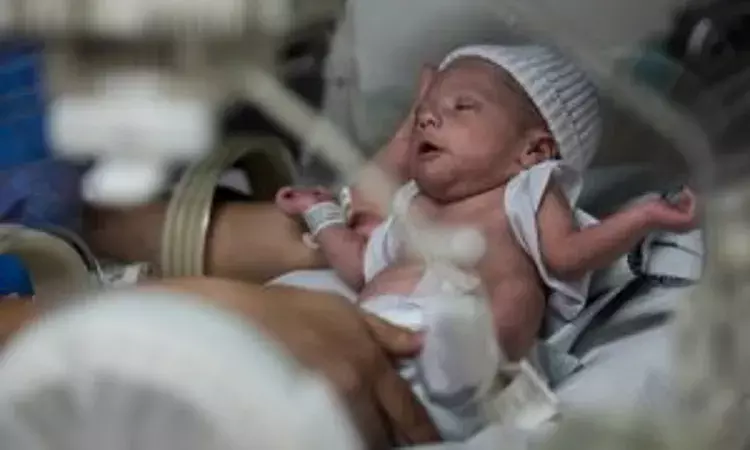- Home
- Medical news & Guidelines
- Anesthesiology
- Cardiology and CTVS
- Critical Care
- Dentistry
- Dermatology
- Diabetes and Endocrinology
- ENT
- Gastroenterology
- Medicine
- Nephrology
- Neurology
- Obstretics-Gynaecology
- Oncology
- Ophthalmology
- Orthopaedics
- Pediatrics-Neonatology
- Psychiatry
- Pulmonology
- Radiology
- Surgery
- Urology
- Laboratory Medicine
- Diet
- Nursing
- Paramedical
- Physiotherapy
- Health news
- Fact Check
- Bone Health Fact Check
- Brain Health Fact Check
- Cancer Related Fact Check
- Child Care Fact Check
- Dental and oral health fact check
- Diabetes and metabolic health fact check
- Diet and Nutrition Fact Check
- Eye and ENT Care Fact Check
- Fitness fact check
- Gut health fact check
- Heart health fact check
- Kidney health fact check
- Medical education fact check
- Men's health fact check
- Respiratory fact check
- Skin and hair care fact check
- Vaccine and Immunization fact check
- Women's health fact check
- AYUSH
- State News
- Andaman and Nicobar Islands
- Andhra Pradesh
- Arunachal Pradesh
- Assam
- Bihar
- Chandigarh
- Chattisgarh
- Dadra and Nagar Haveli
- Daman and Diu
- Delhi
- Goa
- Gujarat
- Haryana
- Himachal Pradesh
- Jammu & Kashmir
- Jharkhand
- Karnataka
- Kerala
- Ladakh
- Lakshadweep
- Madhya Pradesh
- Maharashtra
- Manipur
- Meghalaya
- Mizoram
- Nagaland
- Odisha
- Puducherry
- Punjab
- Rajasthan
- Sikkim
- Tamil Nadu
- Telangana
- Tripura
- Uttar Pradesh
- Uttrakhand
- West Bengal
- Medical Education
- Industry
Marked variability associated with twofold increased risk of neonatal acidosis: BJOG

Intrapartum electronic fetal monitoring has become a standard of care in the assessment of fetal well-being during labour. Despite extensive research on fetal heart rate (FHR) analysis, its interpretation is subject to low specificity and high interobserver variability and its effectiveness in reducing perinatal mortality and cerebral palsy remainscontroversial. Therefore, it seems necessary to reach a more evidence-based approach to FHR interpretation to optimise its performance.
Fetal heart rate (FHR) variability is a pattern of major importance in FHR analysis. Normal FHR variability generally ensures a normal fetal acid–base status. Reduced variability can reflect decreased autonomic activity, in situations such as fetal acidosis or the administration of some maternal medications. Fetal heart rate (FHR) variability is mainly determined by the autonomous nervous system and marked variability could reflect fetal autonomic instability resulting from impaired fetal oxygenation. A recent review stated that marked variability can indicate fetal compromise and highlighted the need for further research on this pattern.Aim of study by Loussert L et al was to assess the association between marked variability in FHR patterns during labour and neonatal acidosis.
This bicentric prospective cohort study was conducted from 1 January 2019 to 31 December 2019 in two French tertiary care maternity units (Toulouse and Poissy). Study included women in labour at ≥37weeks of gestation, with continuous FHR monitoring until delivery. Women with intrauterine fetal death or medical termination, multiple pregnancies or non-cephalic presentation were excluded.
The exposure was marked variability in FHR in the 60minutes before delivery, defined as a variability greater than 25 beats per minute, with a minimum duration of 1 minute. To assess the association between marked variability and neonatal acidosis, authors used multivariable modified Poisson regression modelling. They then conducted subgroup analyses according to the US National Institute of Child Health and Human Development (NICHD) category of the associated fetal heart rate.
The primary outcome was neonatal acidosis, defined as an umbilical artery pH of ≤7.10, obtained after delivery from a clamped segment of the umbilical cord. Secondary outcomes were severe acidosis, Apgar score of <7 at 5minutes, respiratory distress, neonatal intensive care unit admission, neonatal infection and neonatal death.
Among the 4394 women included, 177 (4%) had marked variability in fetal heart rate in the 60minutes before delivery. Acidosis occurred in 6.0% (265/4394) of the neonates. In the multivariable analysis, marked variability was significantly associated with neonatal acidosis (aRR 2.30). In subgroup analyses, the association between marked variability and neonatal acidosis remained significant in NICHD category-I and category-II groups.
In this prospective cohort study, marked variability in FHR patterns occurred in 4% of the neonates in the hour before birth. Neonates with a prenatal marked variability had a twofold increased risk of acidosis. In category-I FHR tracings, marked variability was associated with a fivefold increased risk of neonatal acidosis. However, the absolute risk remained low in this subgroup, with only 6.5% of neonates with marked variability developing neonatal acidosis. In category-II FHR tracings, neonates with marked variability had a twofold increased risk of neonatal acidosis and the absolute risk was high: 18.5% of neonates with marked variability developed neonatal acidosis. The risk of neonatal acidaemia was high for neonates with category-III FHR tracings, at nearly 20%, and marked variability did not significantly increase this risk.
Authors found that marked variability was associated with an increased risk of neonatal acidosis. Therefore, this pattern should be considered in FHR interpretation to optimise intrapartum fetal surveillance.
MBBS, MD Obstetrics and Gynecology
Dr Nirali Kapoor has completed her MBBS from GMC Jamnagar and MD Obstetrics and Gynecology from AIIMS Rishikesh. She underwent training in trauma/emergency medicine non academic residency in AIIMS Delhi for an year after her MBBS. Post her MD, she has joined in a Multispeciality hospital in Amritsar. She is actively involved in cases concerning fetal medicine, infertility and minimal invasive procedures as well as research activities involved around the fields of interest.
Dr Kamal Kant Kohli-MBBS, DTCD- a chest specialist with more than 30 years of practice and a flair for writing clinical articles, Dr Kamal Kant Kohli joined Medical Dialogues as a Chief Editor of Medical News. Besides writing articles, as an editor, he proofreads and verifies all the medical content published on Medical Dialogues including those coming from journals, studies,medical conferences,guidelines etc. Email: drkohli@medicaldialogues.in. Contact no. 011-43720751


